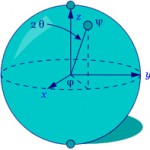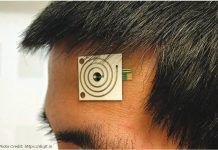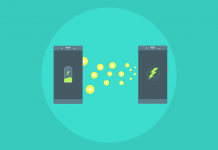 Quantum computers should be much easier to build than previously thought, because they can still work with a large number of faulty or even missing components, according to a study published today in Physical Review Letters.
Quantum computers should be much easier to build than previously thought, because they can still work with a large number of faulty or even missing components, according to a study published today in Physical Review Letters.
This surprising discovery brings scientists one step closer to designing and building real-life quantum computing systems – devices that could have enormous potential across a wide range of fields, from drug design, electronics, and even code-breaking.
Scientists have long been fascinated with building computers that work at a quantum level – so small that the parts are made of just single atoms or electrons. Instead of ‘bits’, the building blocks normally used to store electronic information, quantum systems use quantum bits or ‘qubits’, made up of an arrangement of entangled atoms.
Materials behave very differently at this tiny scale compared to what we are used to in our everyday lives – quantum particles; for example, can exist in two places at the same time. “Quantum computers can exploit this weirdness to perform powerful calculations, and in theory, they could be designed to break public key encryption or simulate complex systems much faster than conventional computers,” said Dr Sean Barrett, the lead author of the study, who is a Royal Society University Research Fellow in the Department of Physics at Imperial College London.
The machines have been notoriously hard to build, however, and were thought to be very fragile to errors. In spite of considerable buzz in the field in the last 20 years, useful quantum computers remain elusive.
Barrett and his colleague Dr. Thomas Stace, from the University of Queensland in Brisbane, Australia, have now found a way to correct for a particular sort of error, in which the qubits are lost from the computer altogether. They used a system of ‘error-correcting’ code, which involved looking at the context provided by the remaining qubits to decipher the missing information correctly.
“Just as you can often tell what a word says when there are a few missing letters, or you can get the gist of a conversation on a badly-connected phone line, we used this idea in our design for a quantum computer,” said Dr Barrett. They discovered that the computers have a much higher threshold for error than previously thought – up to a quarter of the qubits can be lost – but the computer can still be made to work. “It’s surprising, because you wouldn’t expect that if you lost a quarter of the beads from an abacus that it would still be useful,” he added.
The findings indicate that quantum computers may be much easier to build than previously thought, but as the results are still based on theoretical calculations, the next step is to actually demonstrate these ideas in the lab. Scientists will need to devise a way for scaling the computers to a sufficiently large number of qubits to be viable, says Barrett. At the moment the biggest quantum computers scientists have built are limited to just two or three qubits.
“We are still some way off from knowing what the true potential of a quantum computer might be, says Barrett. “At the moment quantum computers are good at particular tasks, but we have no idea what these systems could be used for in the future,” he said. “They may not necessarily be better for everything, but we just don’t know. They may be better for very specific things that we find impossible now.



